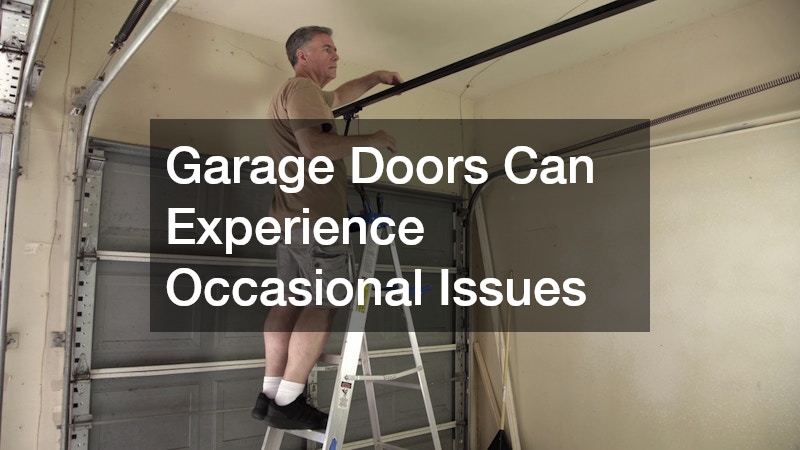Garage doors are more than just functional entry points; they play a key role in your home’s safety, security, and overall appearance. Proper care and maintenance of garage doors can extend their lifespan, prevent costly repairs, and ensure smooth operation every day. Understanding how garage doors work, combined with regular upkeep, allows homeowners to avoid unexpected malfunctions and maintain a reliable and attractive feature of their property.
Taking a proactive approach to garage door maintenance involves understanding the components, inspecting the system regularly, and addressing minor issues before they escalate. Every aspect of care contributes to optimal performance, from cleaning and lubrication to alignment adjustments and troubleshooting. By following a structured maintenance routine, homeowners can enjoy the convenience and safety of a well-functioning garage door for years to come.
Understanding Garage Door Components
Garage doors are complex systems composed of multiple parts working together to lift, lower, and secure the door. Key components include the panels, tracks, rollers, springs, cables, and opener mechanisms. Each element is critical in ensuring smooth operation, balanced movement, and safety during use. Understanding these components provides the foundation for effective maintenance and troubleshooting.
Specifically, the panels form the physical barrier of the garage door, while the tracks guide its movement. Rollers allow smooth sliding along the tracks, and springs provide counterbalance for heavy doors. The cables and pulleys transmit force evenly, and the opener mechanism automates the door’s motion. By familiarizing yourself with these components, you can identify signs of wear, understand how each part interacts, and apply targeted care to prevent malfunction.
Inspecting Your Garage Door Regularly
Regular inspections are essential for maintaining garage doors in optimal condition. Routine checks help detect early signs of wear, damage, or misalignment, allowing homeowners to address issues before they escalate into costly repairs. A consistent inspection routine ensures safety and reliability, reducing the risk of accidents or system failures.
When performing a specific inspection, pay close attention to rollers, tracks, and hinges for any visible wear or damage. Look for frayed cables, rusted hardware, or bent tracks that could compromise performance. Test the door’s balance by manually lifting it halfway; a well-balanced door should remain in place without assistance. These targeted inspections help pinpoint areas that need attention, ensuring the garage door remains safe, functional, and efficient.
Cleaning and Lubricating Moving Parts
Keeping your garage doors clean and properly lubricated is crucial for smooth operation and long-term durability. Dirt, dust, and debris can accumulate in tracks and rollers, creating friction and strain on mechanical components. Lubrication reduces wear and prevents squeaking, ensuring the door operates quietly and efficiently.
Specifically, use a soft cloth to remove dirt and debris from tracks, rollers, and hinges. Apply a silicone-based or lithium-based lubricant to moving parts such as rollers, hinges, and springs. Avoid using grease on tracks, as it can attract more dirt and grime. Consistent cleaning and lubrication prevent rust, minimize noise, and reduce the risk of costly repairs due to worn or damaged components.
Adjusting and Maintaining Door Alignment
Proper alignment ensures that garage doors operate smoothly and safely. Misaligned doors can cause uneven wear on components, strain on the opener mechanism, and increased risk of accidents. Regularly checking and maintaining alignment preserves the door’s function and longevity.
Specifically, check that the tracks are parallel and properly secured to the wall. Ensure that the rollers move freely within the tracks without binding or wobbling. Inspect the door’s balance by manually lifting it and observing its movement; an unbalanced door may require spring adjustments by a professional. Maintaining proper alignment reduces stress on the system, prevents uneven wear, and ensures safe and efficient operation over time.
Troubleshooting Common Garage Door Issues
Even with proper care, garage doors can experience occasional issues that require troubleshooting. Identifying common problems early can prevent larger malfunctions and keep the door functioning reliably. Common issues include noisy operation, slow movement, failure to open or close completely, and uneven tracking.
Specifically, if the door makes unusual noises, it may indicate worn rollers or a lack of lubrication. Inspect the opener and lubricate moving parts if the door opens or closes slowly. Uneven tracking may require adjustment of tracks or replacement of worn components. Addressing these issues promptly, either through DIY solutions or professional assistance, ensures that your garage doors continue to operate safely and effectively.
Proper care and maintenance of garage doors are essential for safety, performance, and longevity. By understanding the components, conducting regular inspections, cleaning and lubricating moving parts, maintaining alignment, and troubleshooting issues promptly, homeowners can prevent costly repairs and enjoy reliable operation for years to come. A well-maintained garage door enhances your home’s functionality and contributes to its overall curb appeal and security.
Investing time in routine maintenance creates peace of mind and ensures that the garage door remains a dependable part of your household. From minor adjustments to preventive care, each step contributes to smooth operation and durability. With consistent attention, garage doors can provide years of trouble-free service, making them a lasting and valuable feature of any home.





